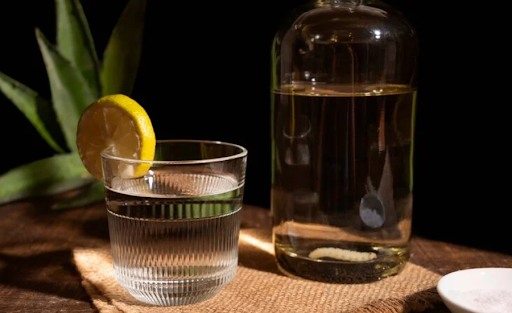Sodziu: Unveiling Korea’s Ancient Rice Spirit and Its Cultural Legacy
When searching for “sodziu,” you’re uncovering a deeply rooted Korean tradition—a clear, rice-based alcoholic beverage that represents centuries of craftsmanship, spiritual rituals, and flavorful celebration. This guide explores everything about sodziu, from its ancient origins and traditional distillation process to its role in modern Korean cuisine and its growing popularity beyond Asia.
The Origins of Sodziu: A Heritage of Flavor and Spirit
Sodziu, often compared to soju but unique in character, dates back to the Goryeo and Joseon Dynasties. Its name stems from traditional Korean terminology for rice distillates, and its early use was more than just for enjoyment—it held sacred and ceremonial value. Passed down through generations, sodziu was originally crafted by monks and village elders for ancestral rites, village celebrations, and medicinal purposes.
Unlike many modern spirits, sodziu was never mass-produced during its early existence. Families often had their own closely guarded recipes using local rice varieties, well water, and unique fermentation methods, making sodziu a symbol of cultural identity and regional pride.
The Traditional Brewing Process of Sodziu
At its core, sodziu is made by fermenting cooked rice with nuruk, a traditional Korean fermentation starter made from wheat and rice. Nuruk breaks down the starches in rice into sugars, allowing yeast to convert them into alcohol. What makes sodziu distinct is its double distillation method using traditional earthenware stills. These clay pots allow the spirit to breathe during the process, creating a smooth, fragrant, and clean taste.
The final product typically has an alcohol content ranging from 20% to 35%, depending on the distillation technique and aging process. Though clear like vodka, sodziu carries subtle rice notes and a slightly nutty aroma, offering a smooth mouthfeel that is both warming and elegant.
Cultural Importance of Sodziu in Korean Society
Sodziu is more than just a drink—it’s a vessel of Korean history and community spirit. In rural Korea, it was a centerpiece of harvest festivals, weddings, and religious ceremonies. During ancestral rites (jesa), sodziu would be poured into small cups and offered to deceased ancestors as a gesture of respect and remembrance.
In a broader cultural sense, sodziu symbolizes harmony, gratitude, and kinship. The act of sharing a bottle was a sign of mutual trust and emotional closeness. To this day, some traditional households continue the practice of making and offering sodziu during Chuseok (Korean Thanksgiving) and Seollal (Lunar New Year).
Sodziu vs. Soju: Not Just a Spelling Difference
At a glance, sodziu and soju may appear similar—they’re both clear, rice-based Korean spirits. However, the differences are significant. Soju is typically diluted, mass-produced, and lower in alcohol, while sodziu retains a pure, handcrafted essence. It’s often undiluted and carries the rich aroma and taste of its ingredients, making it a more authentic representation of traditional Korean spirit-making.
Another key difference lies in the method. Modern soju is usually made with additives and sweeteners, whereas sodziu is free from artificial flavors, allowing the natural taste of fermented rice to shine through.
Modern-Day Revival: Why Sodziu Is Making a Comeback
In recent years, sodziu has seen a resurgence among younger Koreans and global spirit enthusiasts who crave authentic, artisanal experiences. As the craft beverage movement gains momentum worldwide, sodziu’s unique qualities—natural fermentation, rich cultural story, and smooth profile—have made it a coveted item in upscale bars and Korean fusion restaurants.
Artisan distillers are reviving ancient recipes and experimenting with aging sodziu in clay jars or oak barrels to enhance its flavor profile. In Seoul, boutique distilleries and craft bars now offer curated tasting sessions, introducing the younger generation to the legacy of sodziu while offering pairings with modern dishes.
How to Enjoy Sodziu: Tasting Tips and Pairings
To fully appreciate sodziu, serve it slightly chilled in small ceramic or glass cups. Its clean, smooth nature makes it a perfect companion for Korean dishes like bossam (steamed pork belly), jeon (Korean savory pancakes), and hweh (Korean-style sashimi). The umami richness of fermented foods also pairs beautifully with sodziu’s mild sweetness and depth.
If you’re new to sodziu, take small sips to savor its nuanced character. Let it rest on your tongue before swallowing—it’s meant to be savored, not shot.
Sodziu in Global Markets: Rising Popularity Beyond Korea
While sodziu remains relatively unknown compared to sake or soju, it is gaining traction among global audiences. Korean cultural exports—such as K-dramas, K-pop, and cuisine—have played a role in raising awareness about traditional Korean beverages. As curiosity grows, more international specialty stores and online platforms have started offering premium sodziu options for export.
Food critics and beverage experts are taking notice. Some compare sodziu to Japanese shochu or Chinese baijiu but note its smoother, cleaner finish and artisan quality. This international attention has helped elevate sodziu’s profile as a premium, culturally rich spirit worth exploring.
Sodziu and Health: A Natural and Clean Option
Because sodziu is traditionally made without artificial additives, many view it as a cleaner and more natural alternative to modern commercial spirits. The fermentation process preserves beneficial enzymes and creates a complex profile with less harshness. While no alcoholic beverage is inherently healthy, sodziu’s minimal ingredient list and traditional distillation make it a choice that aligns with mindful drinking trends.
Some variations of sodziu also incorporate medicinal herbs like ginseng or omija berries, believed to offer health benefits in traditional Korean medicine. These herbal sodzius are used both recreationally and therapeutically.
Home Brewing Sodziu: A Revival of DIY Culture
Interest in home brewing has sparked a niche community of enthusiasts dedicated to recreating traditional sodziu recipes. With basic equipment, rice, nuruk, and patience, it’s possible to make sodziu at home. Online tutorials, forums, and workshops in Korea and abroad help guide beginners through the complex process of fermentation and distillation.
Home brewers emphasize the importance of purity—using spring water, high-quality rice, and traditional techniques. Some even age their sodziu in ceramic crocks underground, mimicking age-old storage methods that enhance depth and smoothness.
The Future of Sodziu: Preserving and Innovating
As more people seek genuine, unfiltered cultural experiences, sodziu is positioned to become a global symbol of Korea’s heritage. Korean distilleries are now working with historians and culinary artists to archive and preserve ancient brewing knowledge while pushing innovation through new flavors, aging techniques, and sustainable production practices.
Educational campaigns in Korea aim to teach younger generations about the value of sodziu, not just as a beverage, but as an emblem of national identity. Globally, efforts are being made to get sodziu recognized in the premium spirits category—alongside Scotch, Cognac, and Sake.
Conclusion
Sodziu is not just an alcoholic drink—it is a cultural treasure steeped in tradition, flavor, and spiritual significance. From its handcrafted origins in rural villages to its revival in modern bars and export markets, sodziu stands out as an authentic reflection of Korea’s artisanal spirit. Whether you’re a curious traveler, food lover, or a connoisseur of fine drinks, discovering sodziu offers a journey through history, craftsmanship, and taste. Its clean profile, traditional roots, and growing global appeal make sodziu a hidden gem that’s finally getting the spotlight it deserves.
FAQs About Sodziu
Q1. What is sodziu?
A. Sodziu is a traditional Korean rice-based spirit known for its clear appearance, smooth taste, and cultural significance in ceremonies and celebrations.
Q2. How is sodziu different from soju?
A. Unlike mass-produced soju, sodziu is typically handcrafted, higher in alcohol, and made without sweeteners or additives, offering a more authentic and richer flavor.
Q3. What ingredients are used to make sodziu?
A. Sodziu is primarily made from steamed rice, water, and nuruk, a traditional Korean fermentation starter.
Q4. Is sodziu aged like other spirits?
A. Some variations of sodziu are aged in clay jars or oak barrels to develop deeper flavors, though many are enjoyed fresh for their clean taste.
Q5. What does sodziu taste like?
A. It has a smooth, clean finish with subtle notes of rice and a slightly nutty aroma, making it very approachable even for first-time drinkers.
Q6. Can sodziu be found outside of Korea?
A. Yes, artisan distilleries are now exporting sodziu to global markets, and it’s gaining popularity in Korean restaurants and specialty liquor shops worldwide.
Q7. How should sodziu be served?
A. It’s best served chilled in small cups and enjoyed slowly, often paired with Korean dishes like pork belly or savory pancakes.
Q8. Is sodziu used in Korean rituals?
A. Yes, sodziu is traditionally used in ancestral rites and festive ceremonies as an offering and a symbol of respect.
Q9. Is it possible to make sodziu at home?
A. Yes, with the right ingredients and equipment, enthusiasts can brew sodziu at home using traditional fermentation and distillation techniques.
Q10. Why is sodziu becoming popular again?
A. Sodziu’s revival is driven by the global interest in craft spirits and a growing appreciation for authentic, culturally rich beverages.






